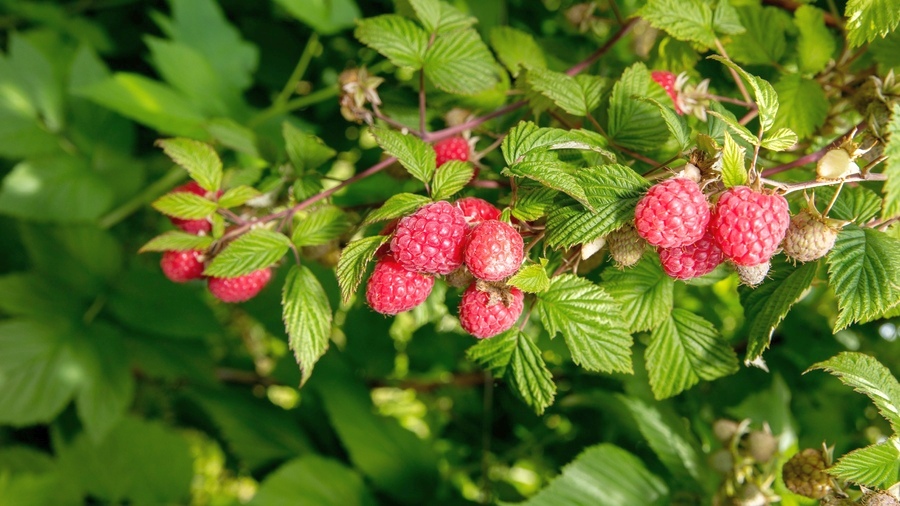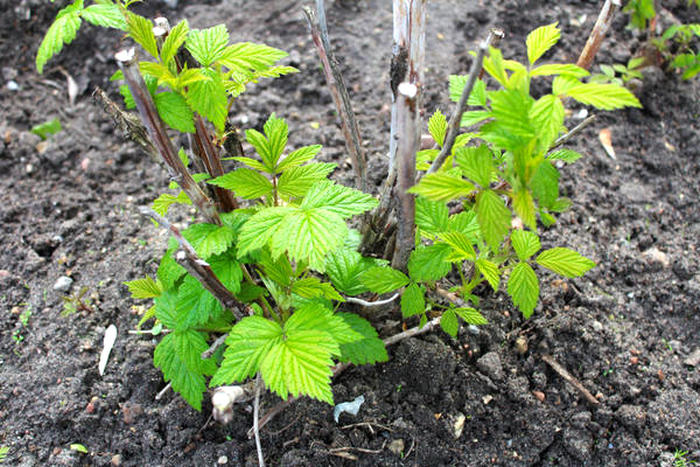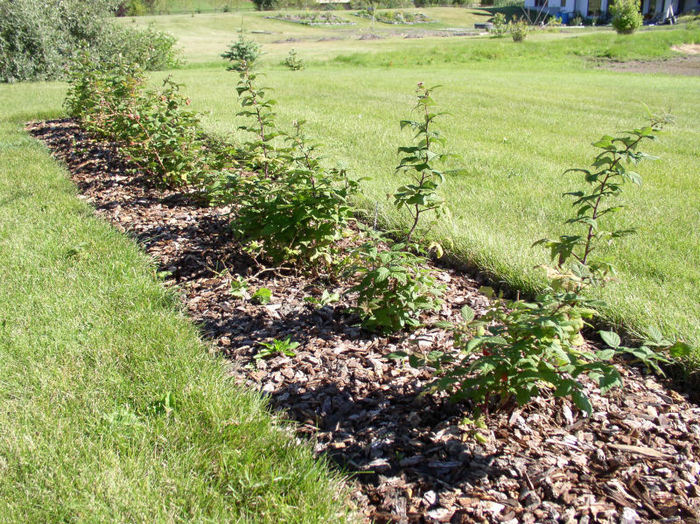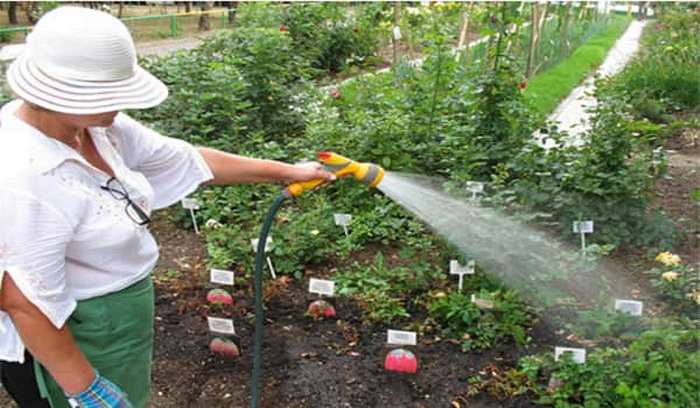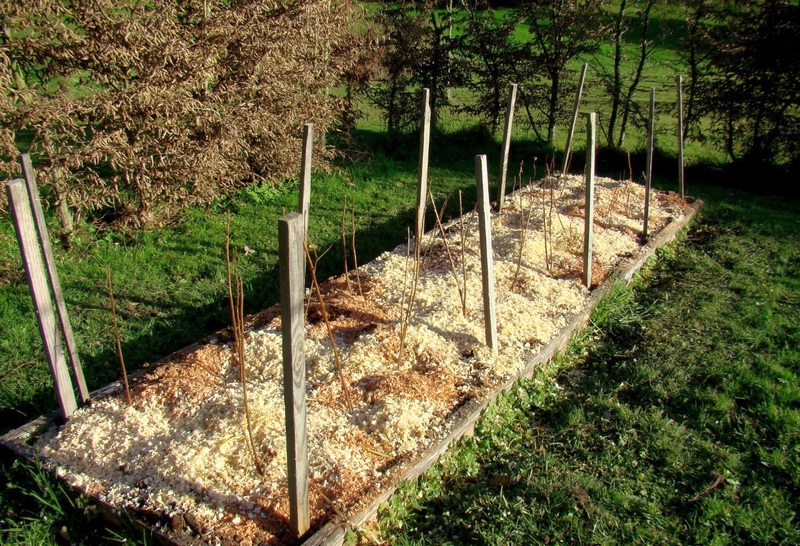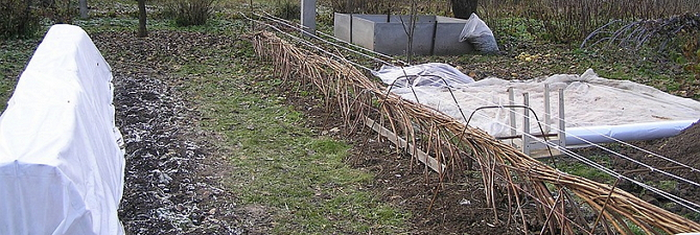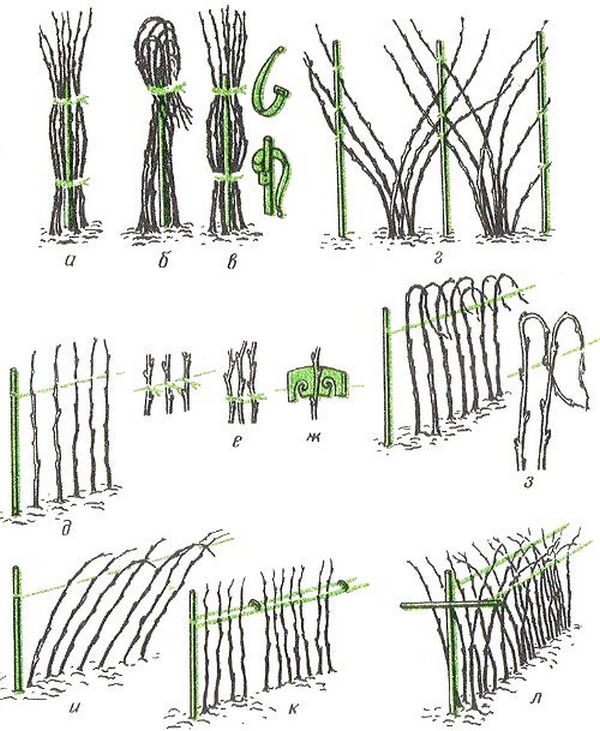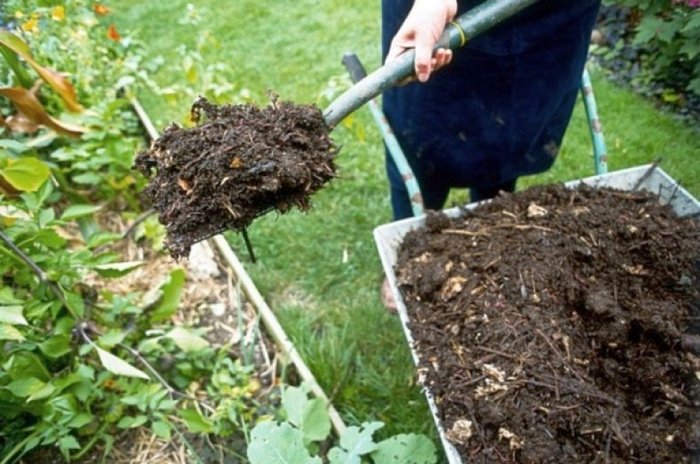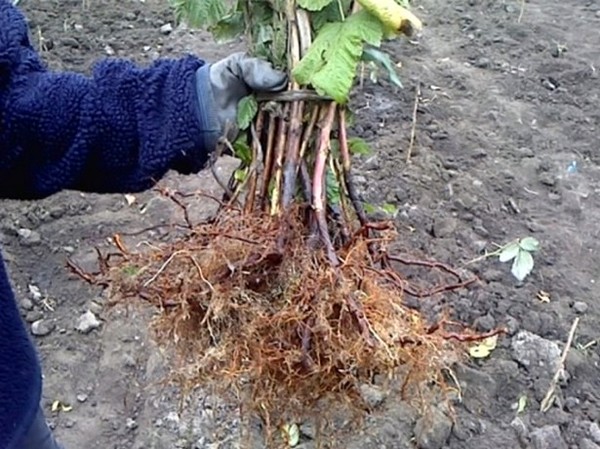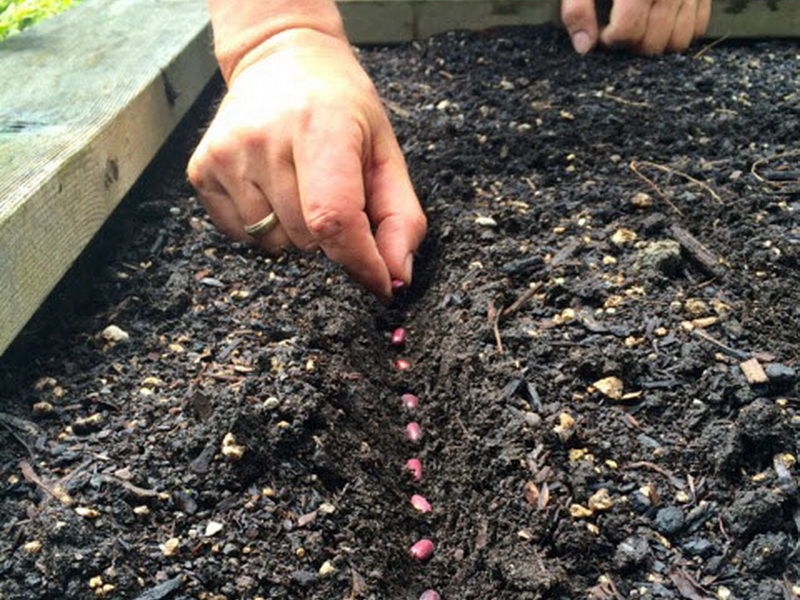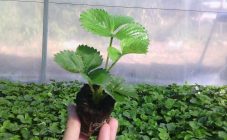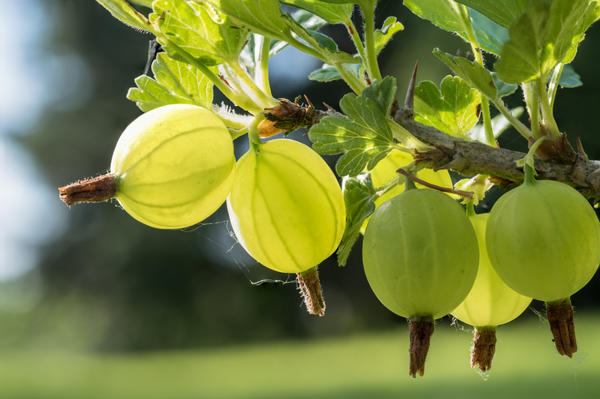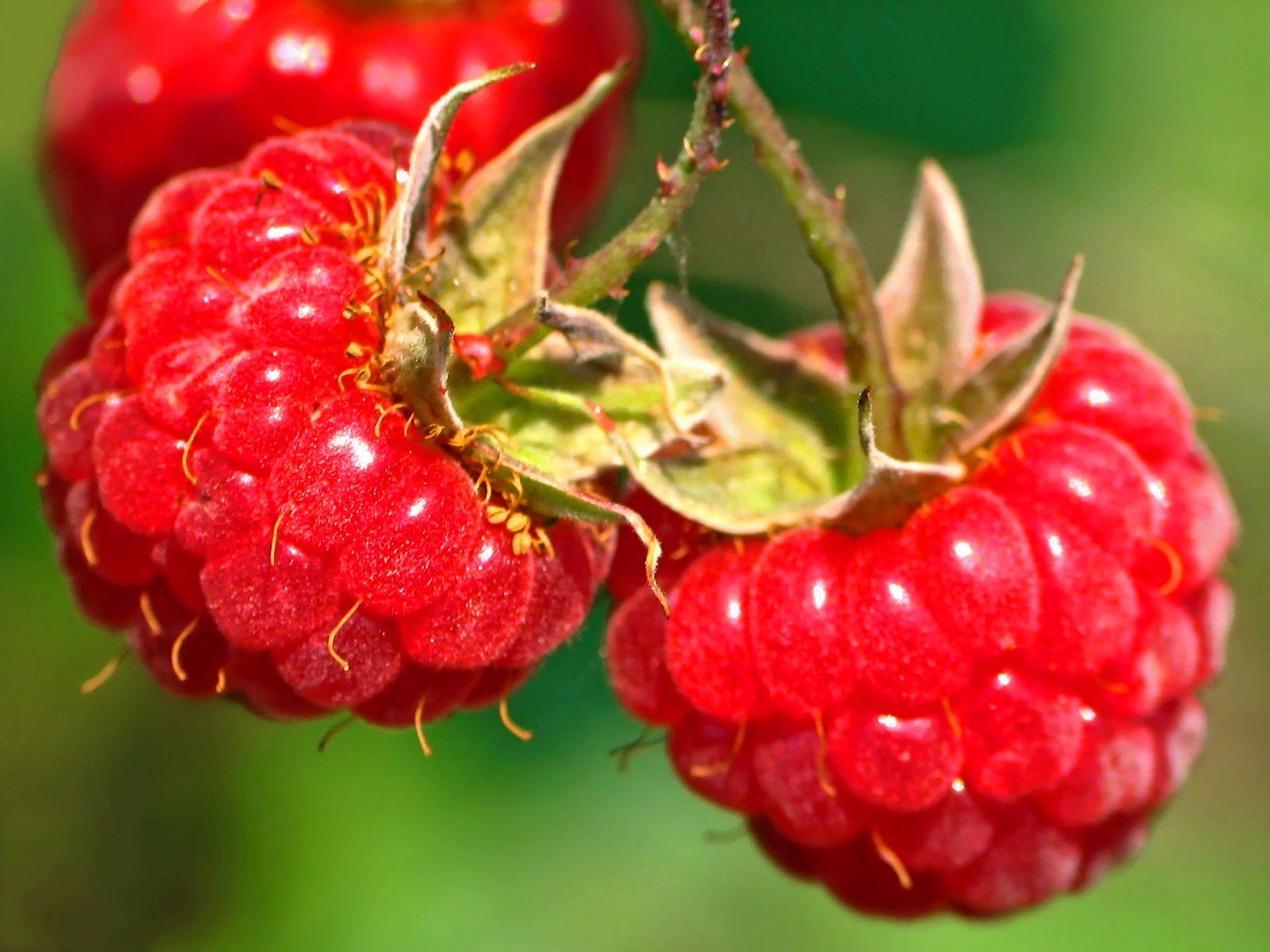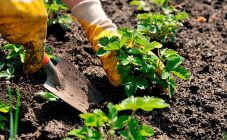Content:
It is difficult to imagine a summer cottage on which there is no raspberry tree. With good agricultural technology, this culture takes root well on any soil, although planting raspberries is more recommended on sandy loams and loams. The berry plant loves the sun, but develops well with a little shade.
When choosing a place, you should find out the depth of the groundwater in advance in order to avoid stagnant waterlogging of the soil. Having picked up a suitable site, you can start solving the question of how to plant raspberries correctly.
Planting raspberries
Before asking for advice on how to plant raspberries, they are determined with the season for these works. Autumn planting is often chosen, at the turn of September-October, but in some regions it is necessary to be in time before the onset of frost. Such work is carried out in the spring, but as early as possible, before the start of sap flow. This option is not suitable for areas with long winters.
Raspberries are planted in several ways: in separate bushes, scattered around the garden, in trenches along a fence or outbuilding. Some gardeners use improvised containers (a deep pallet or a flower pot without a bottom, a car tire, etc.). This option is suitable for young seedlings that can be sheltered next to the strawberry garden.
Separate bushes
Experienced gardeners already know how to plant individual raspberries. Beginners should consider this guide. Bushes are either distributed singly over the site, or form a row of them. In the second case, the distance between the plants is 1.5-2 m. Dig holes with diameters of 0.45-0.6 m, deepening them by half a meter.
If the soil is not entirely fertile, fertilizers are placed on the bottom of the pit: 1/3 of a bucket of compost or humus, 40 g of wood ash, the same amount of superphosphates and 12 g of ammonium nitrate. So that the homemade preparations of the nutrient mixture do not fall on the roots of the raspberries, the composition is sprinkled with a layer of earth and only then the seedling is lowered into the pit.
The planting depth of the bush should be optimal so that the basal buds do not dry out from close proximity to the surface. But the plant should not be lowered deeply either, this will negatively affect its development. The reference point for planting is the root collar - it should slightly protrude from the ground.
Trench option
Planting in furrows requires preliminary preparation of the site. If the time for the planting work is spring, they start digging in the fall. When planting seedlings after summer, plowing is done a month before work. After that, a trench is dug, 0.5 m deep and 0.6 m wide. Immediately fill it with basic fertilizers.
The length of the furrow depends on how many bushes there are, and at what distance the raspberries will be planted. This interval is determined based on the varieties planted, and with the trench method of planting raspberries, the scheme looks like this:
- between compact erect bushes they stand 0.35-0.5 m;
- between high spreading - 1.8-2.5 m;
- the distance between the furrows is 1.5 m.
The trenching method allows you to evenly distribute nutrients between the plants. But keep in mind that raspberries will grow.The recommendation of an experienced farmer will help to suppress these inclinations in advance - the walls of the furrows are lined with sheets of slate, iron, etc. This precaution will prevent the roots from spreading and invading other areas of the garden.
Care
It is not enough to know how to plant raspberries, they need to be provided with proper care. The more attentive the gardener is to the culture, the more chances to get a large harvest of delicious fruits.
Watering
The first irrigation is carried out immediately after planting to make it easier for the bush to root. Watering in the first year is especially important - this allows the plant to develop better. In the future, the procedure should become regular and include 4 main points:
- bud starting to turn into a bud;
- start of fruit ripening;
- finish of the main harvest;
- preparation of the bush for the winter.
Water is used so much that the plants have enough - up to 3.5 liters of moisture goes to each square meter of the berry. If the summer is dry, the amount of watering is increased.
Pruning
As soon as the raspberries are planted, the shoots are cut off, leaving from 25 to 40 cm. In this case, there should be only buds on the stems that did not have time to grow.
In the future, the main focus of pruning is the formation of a bush, in which it is necessary to take into account the peculiarity of the variety. Traditional raspberries bear fruit on biennial stems, which are removed completely in the fall after harvest. But on remontants, shoots that have spawned once will give a crop next year. Only then can the stems be harvested at the very root without regret.
In the spring, they carry out healing pruning, cutting off all the shoots that have not survived the winter. The replacement stems left over from last year are shortened to the upper living bud. Extra shoots are cleared, which will have to be paid attention to all summer.
You should not rejoice at the large abundance of shoots around the seedlings - mainly, these are weeds that prevent the plant from developing. From 6 to 8 young stems are left on the bush, which will bear the next year, the rest are removed completely. The remaining shoots, which have reached a height of 80 cm, are pinched in June, cutting off the tops by 3-5 cm.
Loosening the soil, removing weeds
Loosening is a prerequisite in raspberry farming. This procedure removes the dry crust from the surface, allowing air and moisture to penetrate the roots. Weeds are periodically weeded, which includes loosening elements.
But in order to avoid these agricultural troubles, it is recommended to mulch the near-trunk circle of the earth immediately after planting, using rotted compost, straw, plucked grass, etc. This layer (at least 10 cm) will maintain moderate soil moisture and prevent weeds from growing.
Bending down raspberry bushes for the winter
The methods of preparing the berry for winter depend on the grade. Common raspberries do not tolerate frosts well, so it is recommended to bend the shoots that will produce next year to the ground. The step-by-step course of action is as follows:
- the stems are carefully removed from the trellis;
- collected in a bunch and tilted to the ground;
- so that the shoots do not straighten, they are pinned (but not squeezed) with wooden brackets or wire.
In areas where severe frosts are expected, but winters with little snow, the branches are wrapped in agrofilm, spandbod. As an additional measure, you need to put spruce branches on top. It is recommended to make low fences around the plantation, which will provide snow retention.
A repaired variety, transferred to a one-time fruiting, does not have to be bent down, since all shoots are cut off. In this case, it is enough to cover the hemp with foliage, coniferous branches or a thick layer of sawdust.
A raspberry bush, which looks more like a tree, will be difficult to bend to the ground due to its powerful stems. In varieties such as Tarusa, the shelter is done differently.The branches are slightly shortened and arched supports are installed over the plant, on top of which spandbod is pulled, or each bush is individually tied with insulating material.
Garter
Most raspberry varieties have a spreading crown that needs to be tied up. This will protect the shoots from breaking off under the load of ripe fruits. And with a trellis it is more convenient to harvest.
The equipment for supporting the stems begins from the moment the seedlings are planted. If the trench option was chosen, wooden or metal poles are driven into the ground along the edges of the row on both sides of the bushes. With a considerable length of the trench, additional (intermediate) supports will be needed.
In the first year, it is enough to pull one row of wire at a height of 1 m from the ground. The shoots on the lower tier are tied up with an interval of 10 cm. After a year, another 2-3 rows of garters will be needed, which are laid with an interval of 30 cm from each other.
If the planting of seedlings was carried out in pits, and the bushes are at a considerable distance from each other, then the garter is provided separately to each plant. In this case, gardeners give more preference to the fan-shaped method, spreading branches in both directions from the center and tying each shoot to 2-3 rods evenly distant from the bush.
Top dressing
The fertilizers that were applied during planting will be enough for the raspberries for the current season. Next year, in the spring, the berry is fed with complex mineral fertilizers (how to use, the attached instructions will tell you). This food is brought under the bushes with a frequency of 1 every 3 years.
Nitrogen-containing products are used every spring (late March - early April). The solution is prepared from cow dung (1 shovel per bucket of water), with the addition of urea or nitrate (5 g). Raspberries are responsive to such nutrition and will yield a good harvest.
Raspberry transplant
On one site, the raspberry can exist for a quarter of a century, but after 5 years the yield will begin to fall due to depletion of the soil. Then there are reasonable questions: how best to transplant raspberries and when to transplant raspberries. To begin with, you should choose a new place for the berry, relocating, for example, to the former vegetable beds. The best predecessors are potatoes, legumes, tomatoes and onions.
Having decided to plant raspberries, it should be borne in mind that the old bush is not transferred to the new site. For this purpose, offspring are used, which already have a well-developed root system (up to 15-20 cm). Moreover, their age should be 1 year. Having chosen an aerial stem with a diameter of at least 10 mm, it is cut off from the uterine horizontal root and planted in prepared holes. If the seedling is taller than 30 cm, it should be shortened.
After removing the offspring, root cuttings can also be used as planting material. Having dug out the remnants of the roots from the ground, choose the most viable ones - 10-15 cm long and 3-5 mm in diameter. Each cutting is placed in wet sand and stored in the basement until spring.
A beginner in gardening is also interested in this moment: when raspberries can be transplanted so that they take root better in a new place. The choice of the season entails its own characteristics in agricultural technology:
- For most gardeners, spring is their favorite breeding month. But planting material is harvested in the fall. By this time, good roots have already formed on the cuttings;
- If there is a need to start transplanting a berry plant in the summer, then the choice of place is more responsible. New plantings should not be exposed to direct sunlight. Therefore, you will have to provide shading for the entire season. From August the berry can be opened. In order for the rooting to be successful, all summer long the seedlings are provided with abundant watering;
- Choosing autumn, planting is carried out in the first half of September. By this time, the shoots should already have a strong root system. Otherwise, the seedling will not survive the winter cold.After planting, the bush is watered and covered with a large layer of mulch.
Whatever period the summer resident chooses for transplanting raspberries, it must be borne in mind that rooting will be most effective during the spring procedure. The plant has a whole season to get used to its place thoroughly. If this is a remontant variety, then by autumn it will already be possible to get a small harvest on the shoots.
Video
